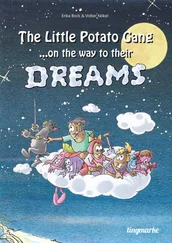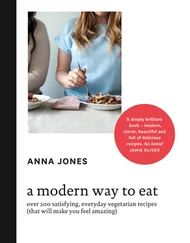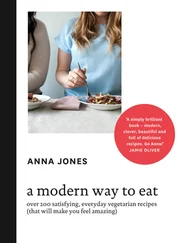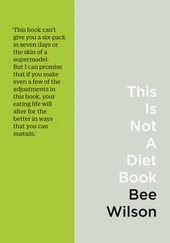A good diet is founded less on absolutes than on the principle of ratio. Take protein. One of the missing links in the obesity crisis seems to be the falling ratio of protein to carbohydrate in our diets. This phenomenon – first documented in 2005 by biologists David Raubenheimer and Stephen Simpson – is known as the ‘protein leverage hypothesis’. In absolute terms, most people in rich countries get more than enough protein, much of it from meat. What has fallen, however, is the proportion of protein in our diets relative to carbohydrates and fats. Because our food system supplies us with a flood of cheap fats and refined carbohydrates (including sugars), the percentage of proteins available to the average person in the US has dropped from 14–15 per cent of total energy intake (which is OK for most people, assuming you are not a bodybuilder, but still on the low side) to 12.5 per cent. This leaves many of us hungry for protein even if we have more than enough calories. Raubenheimer and Simpson have observed this protein hunger at work in many animal species besides humans. When a cricket is short of protein, it will resort to cannibalism. Locusts will forage different food sources until they get the ideal protein balance. Humans are neither as wise as locusts nor as ruthless as crickets. When our food is low in protein, we try to extract the balance from carbohydrates, with the result that we overeat. If Raubenheimer and Simpson are right, then obesity is – among many other things – a symptom of protein hunger.
Protein leverage would also explain why low-carb diets work so well – at least in the short term – as a weight loss tool for many people in our current food environment. The low-carb diet works partly because it is higher in protein (and lower in sugar). But there are other, gentler adjustments you could make to get your ratios back on track short of swearing off bread for life. You could cut down on sugary drinks; add yoghurt or eggs to your breakfast; or go easy on carbs for just one meal a day. Or you could get more protein from green vegetables and pulses, which turn out to be much richer in amino acids than was once believed. 13
It isn’t that there is anything wrong with carbohydrate per se (unless you are suffering from diabetes). After all, humans have thrived on carbohydrate-rich diets in the past – and, as nutrition scholar David Katz remarks, carbs can mean anything ‘from lentils to lollipops’. Our nutrient-obsessed age wants to fit every food into a certain box, yet pulses such as lentils are 25 per cent carbohydrate and 25 per cent protein. Do we welcome the lentil as a protein or reject it as a carb? Perhaps, instead, we should simply find a lentil recipe that tempts us to eat it (spiked with cumin seed and enriched with butter works for me) and call it food, because it is.
We are now at a transition point with food where a critical mass of consumers seem to be ready to make another set of changes to replace the last and, out of this craziness, to create new ways of eating that actually make sense for modern life. Very little about how we eat now would have been considered normal a generation ago, but I take consolation in thinking that surely much of it won’t seem normal in the future either. From around the world, I have found hopeful signs that the pattern of our eating may be turning back again in a healthier and more joyful direction. In the final chapter, I celebrate some glimmers of a different food culture that is just emerging: one in which nutrition and flavour are finally joined up.
To reverse the damage being done by modern diets would require many other things to change about the world today, from the way we organise agriculture to the way we talk about vegetables. We would need to adjust our criteria of prosperity to make it less about money in the bank and more about access to good quality food. We would need different food markets and differently run cities. Through education or experience, we would also need to become people with different appetites, so that we no longer crave so much of the junk foods that sicken us. None of this looks easy at present, but nor is such change impossible. If the food changes we are living through now teach us anything, it is that humans are capable of altering almost everything about our eating in a single generation.
There are two big stories to tell about food today and they could hardly be more different. One of these stories is something like a fairy tale; the other is closer to a horror story. Both, though, are equally true.
And they never went hungry again
The happy version of the story goes like this. Humans have never in history been fed as well as we are right now. As recently as the 1960s, you could go into almost any hospital in the developing world and find children suffering from kwashiorkor, a form of severe protein malnutrition which gives rise to swelling all over the body and a pot belly. Today kwashiorkor is mercifully rare in most countries (though it still afflicts millions of children in central Africa). Other diseases of deficiency such as scurvy, pellagra and beri-beri are – with a few exceptions – terrors of the past. The waning of hunger is one of the great miracles of modernity. And they never went hungry again is the happy ending of many fairy tales. 1
Until the twentieth century, the threat of famine was a universal aspect of human existence across the world. Harvests failed; populations starved; for anyone but the wealthy, food wasn’t to be relied on. Even in rich countries such as Britain and France, ordinary people lived with the daily spectre of going to sleep hungry and spent as much as half their income on basic staples such as grain and bread. In the rice-based economies of Asia, mass starvation regularly killed whole communities.
The decline of hunger is one of the great wonders of our time. In 1947, according to the Food and Agriculture Organisation (FAO) at the United Nations, half of all the people on the planet were chronically underfed. By 2015, that figure had dropped to one in nine – even though the overall population had risen astronomically during the same period. The number of people living in extreme poverty continues to decline dramatically. On any given day in 2017, the numbers affected by extreme poverty – defined as less than $1.90 a day per person to cover food, clothing and shelter, adjusted for inflation – declined by 250,000. 2
Absolute hunger is much rarer than it once was. In 2016, the Swedish historian Johan Norberg went so far as to argue – in his book Progress – that the problem of food had been solved. Advances in farming technology over the course of the twentieth century made massively more food available to vastly more people. A modern combine harvester can yield in six minutes what it once took twenty-five men a day to do and modern cold storage can prevent crops from rotting and being wasted after harvest. 3More food is produced each year than ever before.
Perhaps the greatest changes of all came about through the invention in the 1910s of the Haber-Bosch process, a method for synthesising ammonia which made highly effective nitrogen fertilisers cheap to produce for the first time. Vaclav Smil, a Canadian expert on land use and food production, has calculated that as of 2002, 40 per cent of the world’s population owed their existence to the Haber-Bosch process. Yet how often do you hear anyone talking about Haber-Bosch? Without it, many of us might not be here today, yet it has far less name recognition than Häagen-Dazs, a fake, supposedly Danish label for a brand of ice cream dreamed up by a businessman in the Bronx in 1961. In a way, our ignorance about Haber-Bosch shows once more how lucky we are. We have reached the point where most of us can afford to think more about ice cream than survival. 4
Читать дальше












